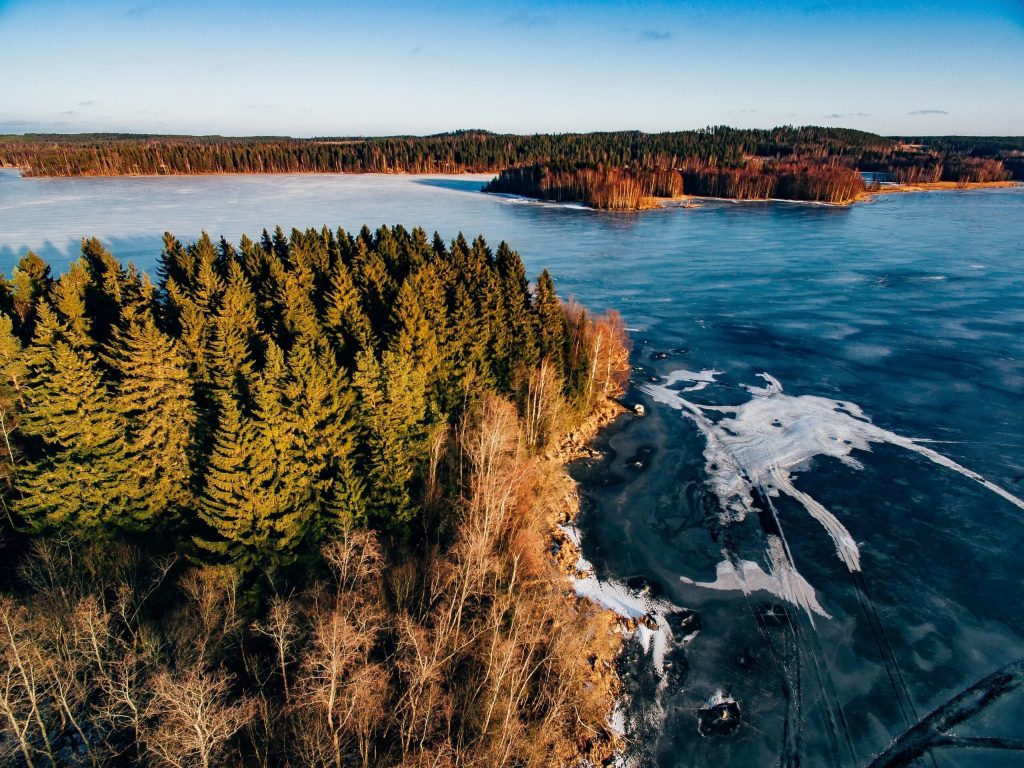Finland’s population is 5.5 million (2017), and the majority of the population is concentrated in the southern region. 88.7% of the population is Finnish and speaks Finnish, a Uralic language unrelated to the Scandinavian languages; next come the Finland-Swedes (5.3%).
Finland is the eighth-largest country in Europe and the most sparsely populated country in the European Union. It is a parliamentary republic with a central government based in the capital city of Helsinki, local governments in 311 municipalities, and one autonomous region, the Åland Islands. Over 1.4 million people live in the Greater Helsinki metropolitan area, which produces one third of the country’s GDP.

At the time Finland had three main cultural areas–Southwest Finland, Tavastia and Karelia–as reflected in contemporary jewellery
Wikipedia
Finland was inhabited when the last ice age ended, approximately 9000 BCE. The first settlers left behind artifacts that present characteristics shared with those found in Estonia, Russia, and Norway. The earliest people were hunter-gatherers, using stone tools. The first pottery appeared in 5200 BCE, when the Comb Ceramic culture was introduced. The arrival of the Corded Ware culture in southern coastal Finland between 3000 and 2500 BCE may have coincided with the start of agriculture. The Bronze Age and Iron Age were characterised by extensive contacts with other cultures in the Fennoscandian and Baltic regions and the sedentary farming inhabitation increased towards the end of Iron Age. At the time Finland had three main cultural areas–Southwest Finland, Tavastia and Karelia–as reflected in contemporary jewellery.

Education is compulsory between the ages of 7 and 16. After lower secondary school, graduates may either enter the workforce directly, or apply to trade schools or gymnasiums (upper secondary schools)
Wikipedia
Most pre-tertiary education is arranged at municipal level. Even though many or most schools were started as private schools, today only around 3 percent of students are enrolled in private schools (mostly specialist language and international schools), much less than in Sweden and most other developed countries. Pre-school education is rare compared with other EU countries and formal education is usually started at the age of 7. Primary school takes normally six years and lower secondary school three years. Most schools are managed by municipal officials.
The flexible curriculum is set by the Ministry of Education and the Education Board. Education is compulsory between the ages of 7 and 16. After lower secondary school, graduates may either enter the workforce directly, or apply to trade schools or gymnasiums (upper secondary schools). Trade schools offer a vocational education: approximately 40% of an age group choose this path after the lower secondary school. Academically oriented gymnasiums have higher entrance requirements and specifically prepare for Abitur and tertiary education. Graduation from either formally qualifies for tertiary education.
